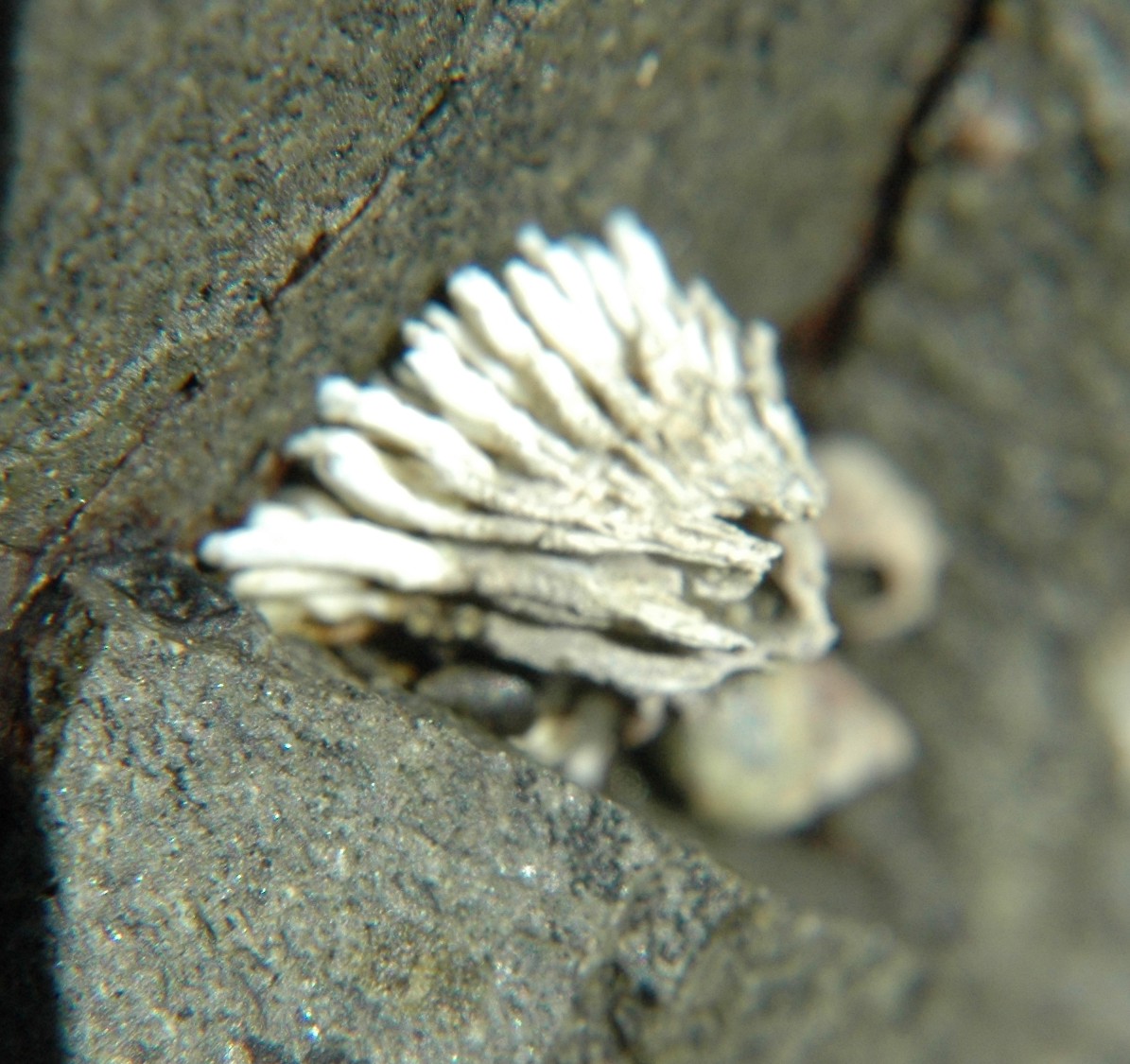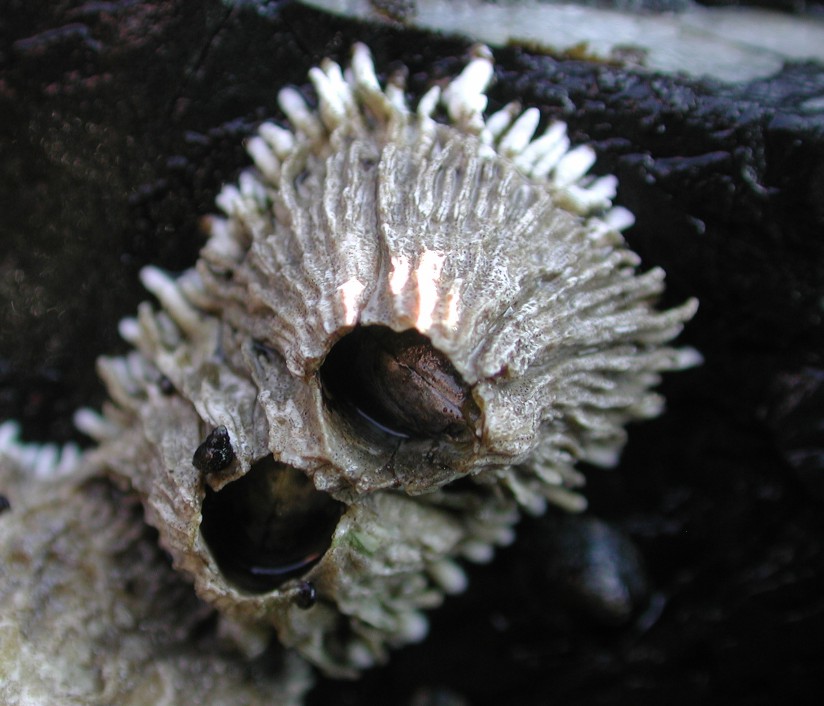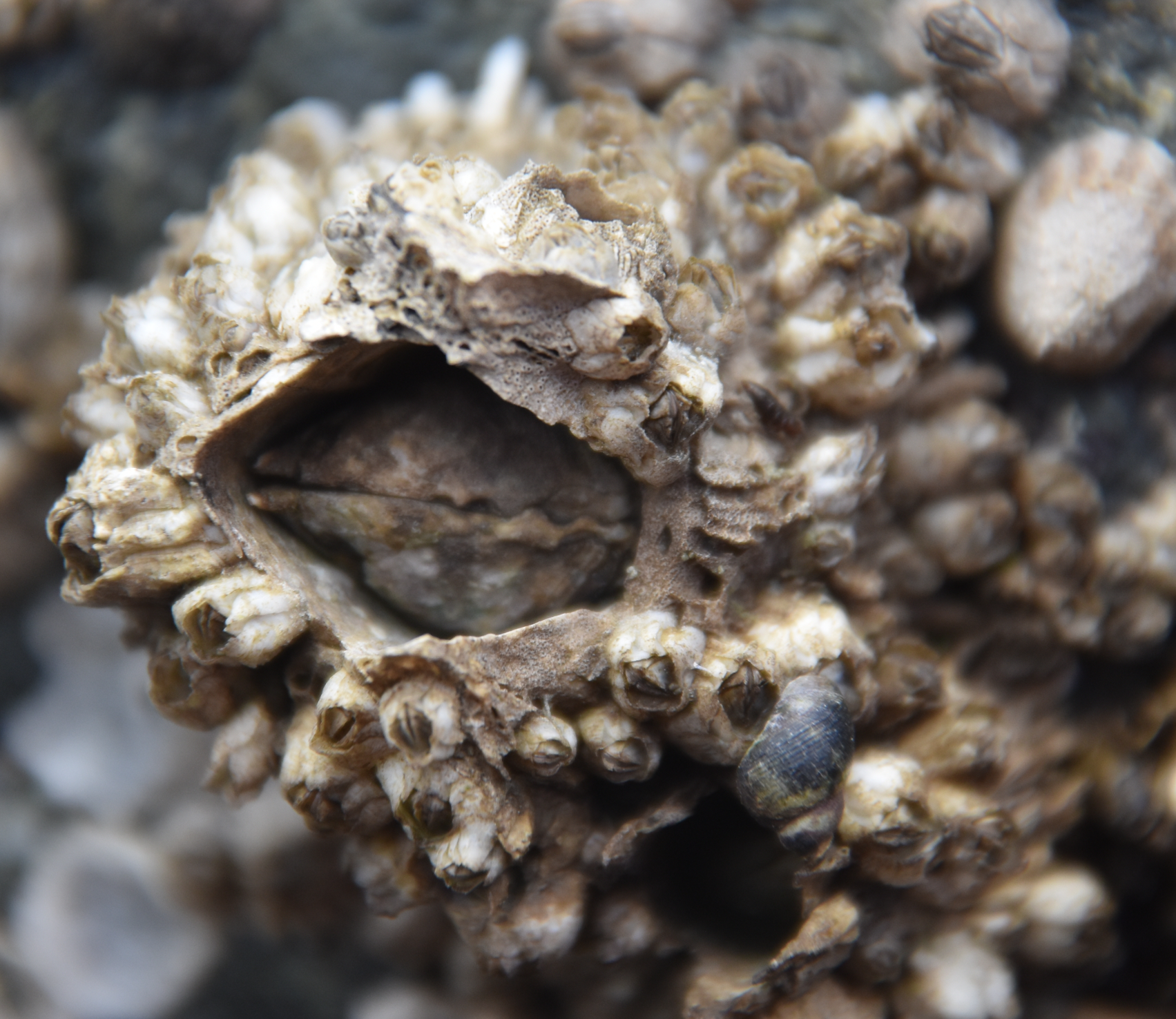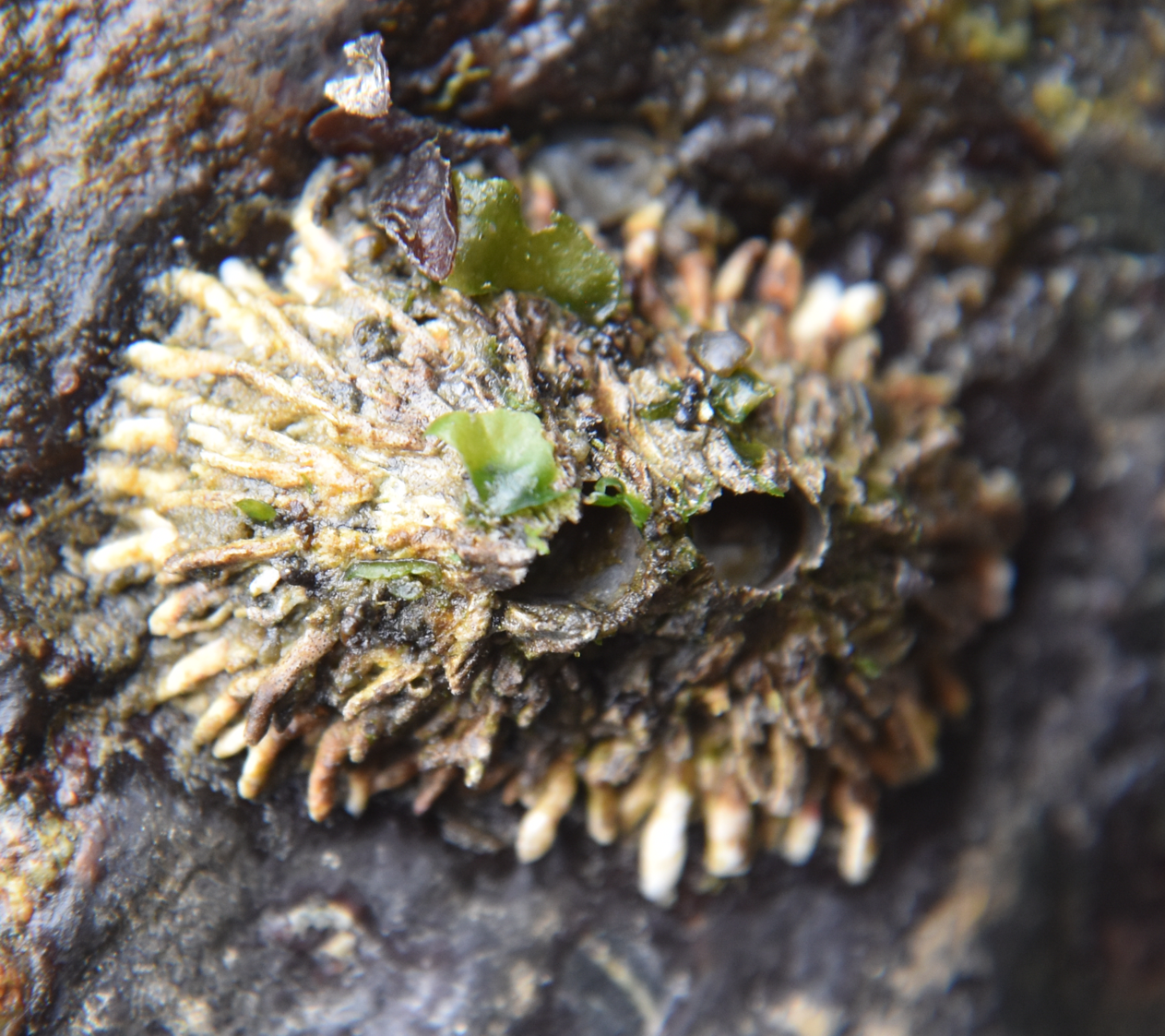Semibalanus cariosus (Pallas, 1788)Common name(s): Thatched barnacle, Rock barnacle, Horse barnacle |
|
| Synonyms: Balanus cariosus |  |
| Phylum Arthropoda
Subphylum Crustacea Class Maxillipoda Subclass Thecostraca Infraclass Cirripedia Superorder Thoracica Order Sessilia Suborder Balanomorpha Superfamily Balanoidea Family Archaeobalanidae |
|
| Semibalanus cariosus from a rock near Lopez Island. Diameter about 1.5 cm. | |
| (Photo by: Dave Cowles, July 2006) | |
How to Distinguish from Similar Species: This is the only species locally that has the strong thatchlike external appearance. It is common in the intertidal along with Balanus glandula, which also has a sinuous junction between the tergum and scutum. It can be distinguished from B. glandula by: The tubelike ribs, the beak, the lack of a dark spot on the scutum, and the thin scar with no centripetal lines it leaves when broken off the rock. Other intertidal barnacles do not have the sinuous junction between the tergum and scutum. A bit farther south, Tetraclita rubescens has a similar thatchlike appearance but it is a pinkish red color and has only 4 plates.
Geographical Range: Bering Sea to Morro Bay, Central California; Japan
Depth Range: Mid intertidal to shallow subtidal. Especially common (even dominant) in the low intertidal, below the densest band of Balanus glandula and near Mytilus trossulus or M. californianus. This is often one of the most common lower intertidal species in the Pacific Northwest.
Habitat: Attached to rocks, floats, or pilings. Not often found around fresh water. Especially common on steep shores with much current and waves in our area but on the open coast it is found in cracks and protected locations.
Biology/Natural History: Farther south this species grows individually, but here in the Pacific Northwest aggregations can sometimes be so dense that they form a dense-packed aggregation in which individuals are much taller than wide and the thatched appearance is not immediately evident. The barnacles grow very tall and narrow when densely aggregated. Competitors for space include Halichondria panicea (crumb of bread sponge), Mytilus trossulus, and Mytilus californianus. When the barnacles are small they may be bulldozed off the rocks by grazing limpets such as Lottia digitalis. The large size of adults likely protect them from some predators such as Nucella lamellosa or the seastars Pisaster ochraceous and Pycnopodia helianthoides. Eggs are brooded in the winter and released as nauplius larvae. The parent barnacle releases a pheromone which stimulates the larvae to hatch (Clare, 1999). The nauplii go through several molts, culminating with a cypris larva. The cyprid larvae settle in the spring (fall and winter on the open Washington coast). The larvae preferentially settle near adult barnacle shells. Lifespan up to 15 years.
These barnacles appear to have been eaten by native
tribes in SE Alaska
in some coastal locations during an extended time period. At
other
times, mussels were a more common food in the same regions.
| Return to: | |||
| Main Page | Alphabetic Index | Systematic Index | Glossary |
References:
Dichotomous Keys:Flora and Fairbanks (as Balanus cariosus)
Kozloff 1987, 1996
General References:
Carefoot,
1977 (as Balanus cariosus)
Harbo,
1999
Johnson
and Snook, 1955 (as Balanus cariosus)
Kozloff,
1993
McConnaughey
and McConnaughey, 1985
Morris
et al., 1980
O'Clair
and O'Clair, 1998
Ricketts
et al., 1985
Sept,
1999
Scientific
Articles:
Clare, A.S., 1999. Signal transduction of barnacle
egg-hatching
pheromone: pharmacological assays indicate a comparatively simple
mechansim
of eicosanoid action. Journal of Chemical Ecology 25: pp
673-685
Moss, Madonna L. and Jon M. Erlandson, 2010. Diversity in North Pacific shellfish assemblages: the barnacles of Kit-n Kaboodle Cave, Alaska. Journal of Archaeological Science 37: pp 3359-3369
Pilsbry, Henry A., 1916. The sessile barnacles (Cirripedia) contained in the collections of the U.S. National Museum, including a monograph of the American Species. Smithsonian Institution United States National Museum Bulletin 93. (available through Google Scholar)
Starr, M., J.H. Himmelman, and J.C. Therriault, 1991. Coupling of nauplii release in barnacles with phytoplankton blooms: a parallel strategy to that of spawning in urchins and mussels. Journal of Plankton Research 13: pp 561-571
Web sites:
General Notes and Observations: Locations, abundances, unusual behaviors:

These individuals, on a vertical rock face, are abut 2 cm
diameter.
Photo by Dave Cowles July 2007

In this large individual, encrusted with smaller barnacles and
a Littorina
snail, the beaks on the tergum
can be seen on the left, sheltered under the rostrum.
The sinuous margin between the terga
and scuta
is also
partly visible. Photo by Dave Cowles, July 2020

Some individuals, such as these two at Sares Head, have a very small
aperture (orifice) between the plates. In this respect as well as the
fingerlike
projections on the wall plates they look similar to Tetraclita
rubescens, which lives further south and often has a
pinkish hue.
Photo by Dave Cowles, July 2020
Authors and Editors of Page:
Dave Cowles (2006): Created original page